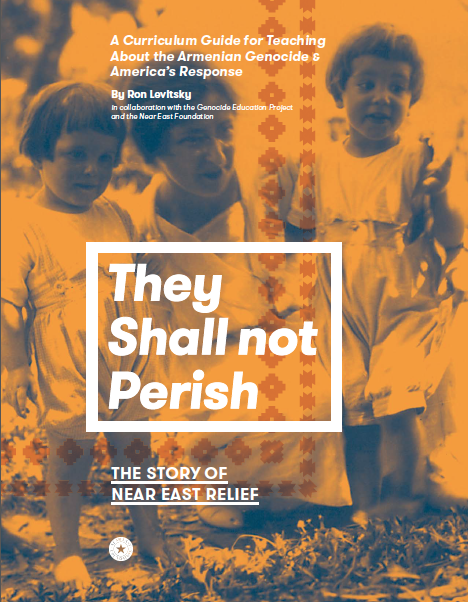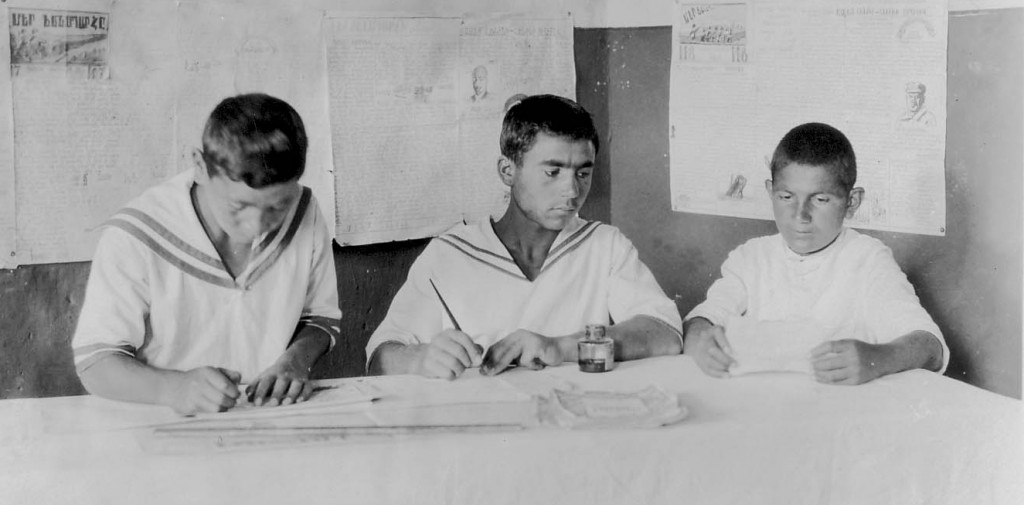Teaching About Genocide and Near East Relief

“Did growing up in an orphanage affect the kids’ health?”
“Could the relief workers have helped more people by joining the army?”
“Why were countries more accepting of refugees back then?”
When our Director and Curator speaks at high schools, she is always impressed by the students’ questions. Young people connect to the history of Near East Relief on a fundamental level. They pick out difficult points and analyze them with logic and empathy.
There are several excellent guides available for teaching about the Armenian Genocide, but there has never been a curriculum specific to Near East Relief’s work — until now. The Near East Foundation has collaborated with experienced history teacher Ron Levitsky and the Genocide Education Project to produce a curriculum guide for middle and high school teachers.
Entitled They Shall Not Perish: The Story of Near East Relief, the guide functions as a companion to our downloadable exhibition of the same name. It can also be used as a standalone educational tool on this landmark chapter in American history. They Shall Not Perish introduces the concept of genocide and examines the Armenian Genocide within its historical context. The guide invites students to explore Near East Relief’s work through photographs and quotations while encouraging dialogue on complex subjects like international relations and modern genocide.
They Shall Not Perish is an excellent resource for classes studying World War I, U.S. History, or Holocaust and Genocide Studies. The guide is available as a free download for educational purposes. You can use the guide in conjunction with the downloadable panel exhibition for an even more meaningful educational experience.

Teaching and learning were vital to Near East Relief's work. Our new curriculum guide continues this tradition.
